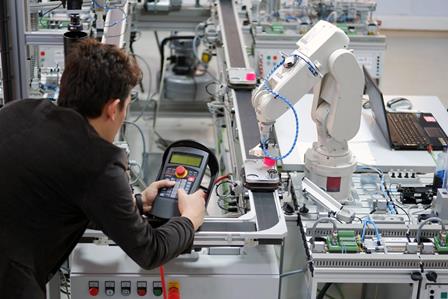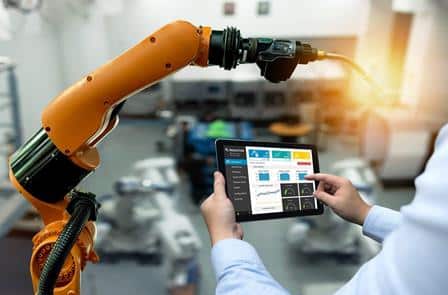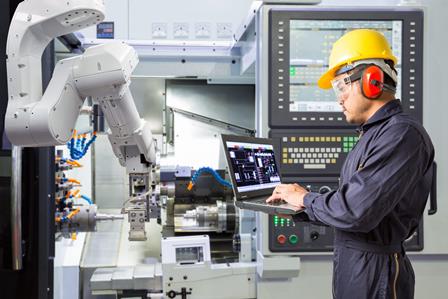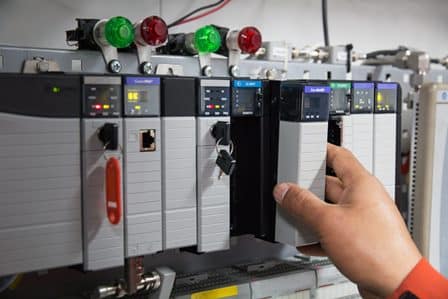World Ocean Day is here for us all, including engineers, to think about what we can do to protect our precious oceans.
In 2022 World Ocean Day is changing. If you’re a supporter of the annual event that focuses on the ocean you would have noticed the logo changed this year, dropping the “s” from World Ocean(s) Day.
The reason might seem like simple wordplay, but it digs deeper. World Oceans Day is plural, giving a sense that there is more than one ocean.
The reality is there is one ocean that binds us all. The focus has been recalibrated behind World Ocean Day to give one message: One Ocean, One Climate, One Future – Together.
Semantics aside World Ocean Day focuses on the numbers, that is the amount of ocean we can save and protect.
The goal now is 30/30 – to protect 30% of our blue planet by 2030.
So how can engineers help make those numbers a reality? A start is developing the algorithm to identify areas in the greatest need of protection.

The reality facing the ocean
Early in March 2022 eight former Heads of State, two former Prime Ministers, six former Ministers, and four environmental and Indigenous and local experts, and the Campaign for Nature’s Global Steering Committee (GSC) released a joint statement to back World Ocean Day’s 30/30 target.
The statement aims to assert that the success of global biodiversity relies on the world working together as one.
In the publication of the Intergovernmental Panel on Climate Change report published last year the UN asserted that the protection of 30-50% of the world’s land and the ocean is required for maintaining the resilience of biodiversity and ecosystem services at a global scale.
Not out of the blue
Also, in March 2022 a new study published in Nature offered a combined solution to several of the challenges for ocean preservation.
The international team of 26 authors identified the areas that will safeguard 80% of the habitats for endangered marine life but increase sustainable fishing to allow food chains not to break.
The study is the first to quantify the potential release of carbon dioxide into the ocean from trawling and finds that fishing via trawling is pumping hundreds of millions of tons of carbon dioxide into the ocean every year, which has volumes close to that of aviation.
To identify the priority areas, the authors which include leading marine biologists, climate experts, and economists—analyzed the world’s unprotected ocean waters based on the degree to which they are threatened by human activities.
These scientists and researchers can then develop an algorithm to identify those areas where protections would deliver the greatest benefits across the three complementary goals of biodiversity protection, seafood production and climate mitigation.

The algorithm
The Good Data Initiative trumped knowledge on diving deep into ocean data with the 2021 research titled Digital Oceans: Unlocking Ocean Data.
With the work researchers aimed to identify the gaps in ocean data preventing the understanding of marine ecosystems and the accurate assessment of human impacts on them.
Often this data is privately held by companies or governments which makes it inaccessible for a researcher or the general public.
Gaps in data information can be addressed in some ways, and the suggestions include the development of remote sensing technologies for ocean data being collected at an unprecedented scale.
These technologies are increasing and enabling new access points for data collection. To advance this engineers can look at the automation of the processing of data through machine learning approaches and technologies.
The authors maintain that the generation of new data assets will put more of the right type and quality data.
This includes more improved remote sensing technologies that can extend the coverage of global oceanographic data, while solar-powered vessel tracking devices attached to small vessels can provide insight into the fishing activity of the numerous small-scale fishing communities.
This data can then create a helpful algorithm to establish needs further.
Safeguarding Biodiversity
The report from Nature identified diverse marine areas in which species and ecosystems face the greatest threats from human activities.
Establishing marine protected areas (MPAs) with strict protection in those places would safeguard more than 80% of the ranges of endangered species.
The authors found that the priority locations are distributed throughout the ocean, with the majority close to the 200-mile Exclusive Economic Zones of coastal nations.
The additional protection targets are located in the high seas—those waters governed by international law.
Effectively placed marine protected areas (MPAs) that ban fishing would actually boost the production of fish—at a time when supplies of wild-caught fish are dwindling and demand is rising.
In doing so, the study refutes a long-held view that ocean protection harms fisheries and opens up new opportunities to revive the industry just as it is suffering from a recession due to overfishing and the impacts of global warming.
This is another area where engineers can develop the technologies to ensure illegal fishing does not take place, or use existing technology to enforce the ban on fishing. If successful the protection of key areas can yield over 8 million metric tons relative to business as usual in fish.

Creating a smart ocean
Engineers have identified six areas to create a smart ocean that falls in line with what World Ocean Day wants to achieve. In Research on Smart Ocean Engineering Construction, three engineers presented ways to create a system that has a benefit to the ocean and humans.
- Environmental protection
Construct ocean environment with three-dimensional real-time monitoring systems, smart ocean environmental monitoring and evaluation system, ocean resources, smart management of a map system, ocean protection and development of information systems. The construction of smart ocean environmental monitoring, evaluation, management, decision-making and other service systems, can strengthen the construction of ocean ecological civilisation, and comprehend the transformation of ocean economic development and industrial structure optimization.
- Ocean forecasting
Construct ocean disaster environment real-time monitoring systems for ocean environmental intelligence forecasting and early warning system, ocean pre-alarm comprehensive production and distribution system, and ocean emergency management system. This will help with data collection and risk profiling.
- Management of seas and islands
Construct a dynamic monitoring system for seas and islands, management system for sea use, smart analysis and decision system for seas and islands, dynamic information publication system for areas and islands, control information system for the ocean functional area, and a three-dimensional visualization system for the island.
- Ocean administrative law enforcement
Construct ocean law enforcement supervision information management system, ocean law enforcement monitoring smart auxiliary decision-making system, ocean law enforcement supervision information release system, ocean rights and interests maintenance information management system.
- Ocean economy
Construct ocean economic operation monitoring and evaluation system, ocean economic geographic information system, ocean economic information sharing system, and ocean economic public opinion monitoring system.
- Ocean fishery
Construct fishery environment smart monitoring and evaluation system, aquaculture intelligence decision support system, aquaculture smart remote diagnosis system, aquatic product quality and safety management system, fishery integrated fishing management system, fishery production safety management system, and fishing port management system.
With so much relying on Automation Engineering, for the future of our oceans and beyond, here are some courses you can use to upskill:
On-Campus - Bachelor of Science (Industrial Automation Engineering)
Graduate job-ready as an industrial automation engineering technologist in many…Read moreOn-Campus - Master Of Engineering (Industrial Automation)
Upon completion of this program, you will gain skills and…Read moreOnline - Master of Engineering (Industrial Automation)
Upon completion of this program, you will gain skills and…Read moreGraduate Certificate in Industrial Automation Engineering
Upon completion of this program, you will gain skills and…Read moreOnline - Bachelor of Science (Industrial Automation Engineering)
Upon completion of this program, you will gain skills and…Read moreUndergraduate Certificate in Industrial Automation Engineering
Upon completion of this undergraduate certificate, you will have fundamental…Read moreProfessional Certificate of Competency in Allen Bradley Controllogix / Logix5000 PLC Platforms
Designed for engineers and technicians who need practical knowledge in…Read more
References:
https://www.gooddatainitiative.com/digital-oceans
Research on Smart Ocean Engineering Construction. Available from: https://www.researchgate.net/publication/317112152_Research_on_Smart_Ocean_Engineering_Construction [accessed Mar 25 2022










